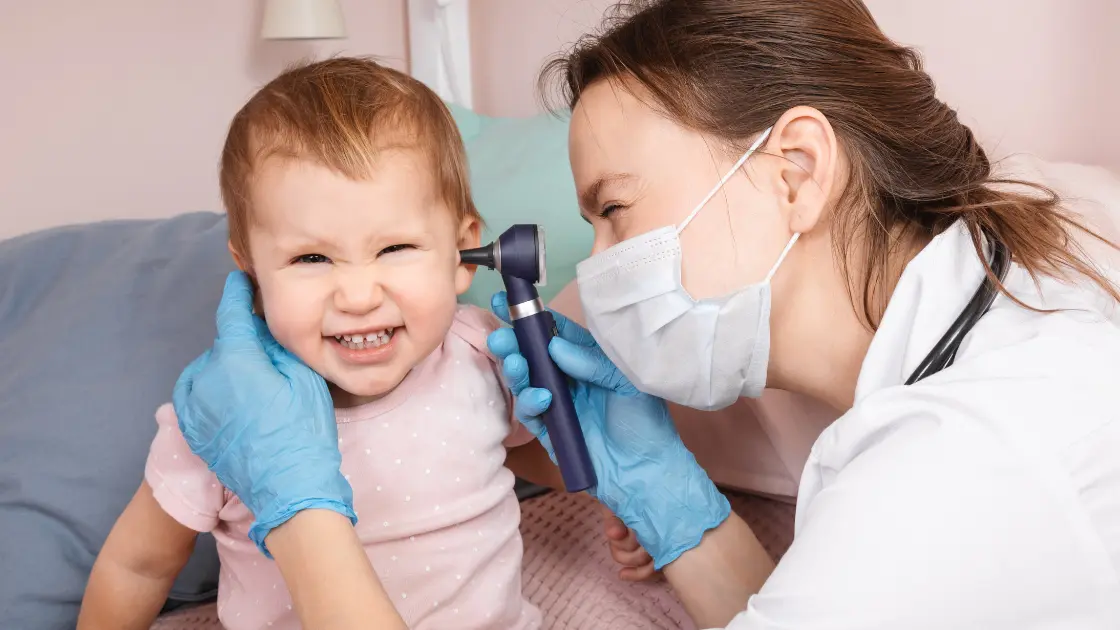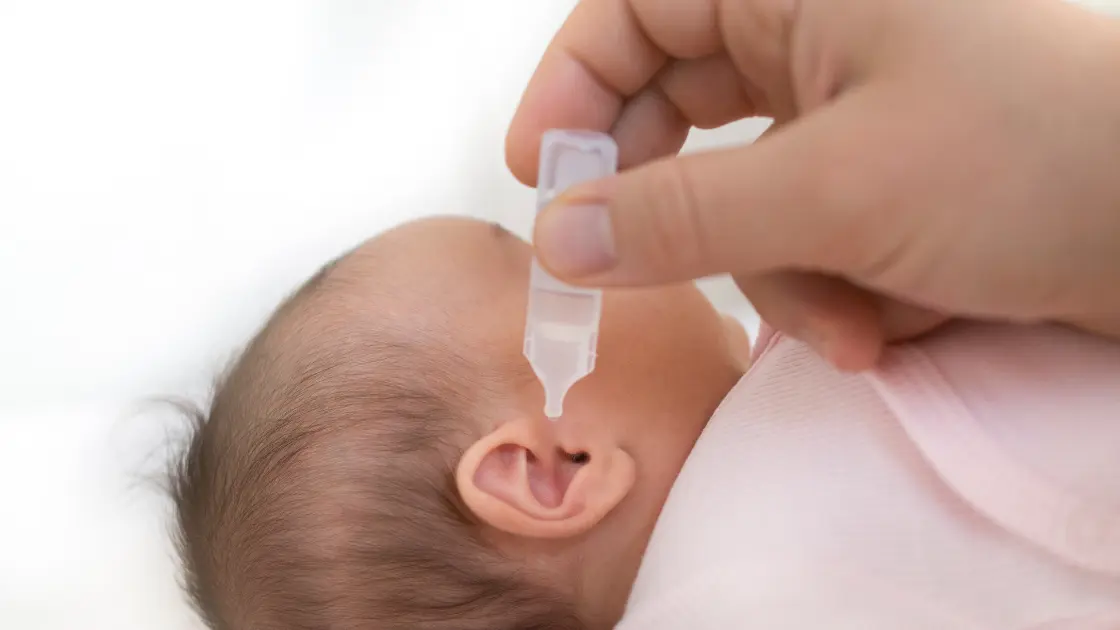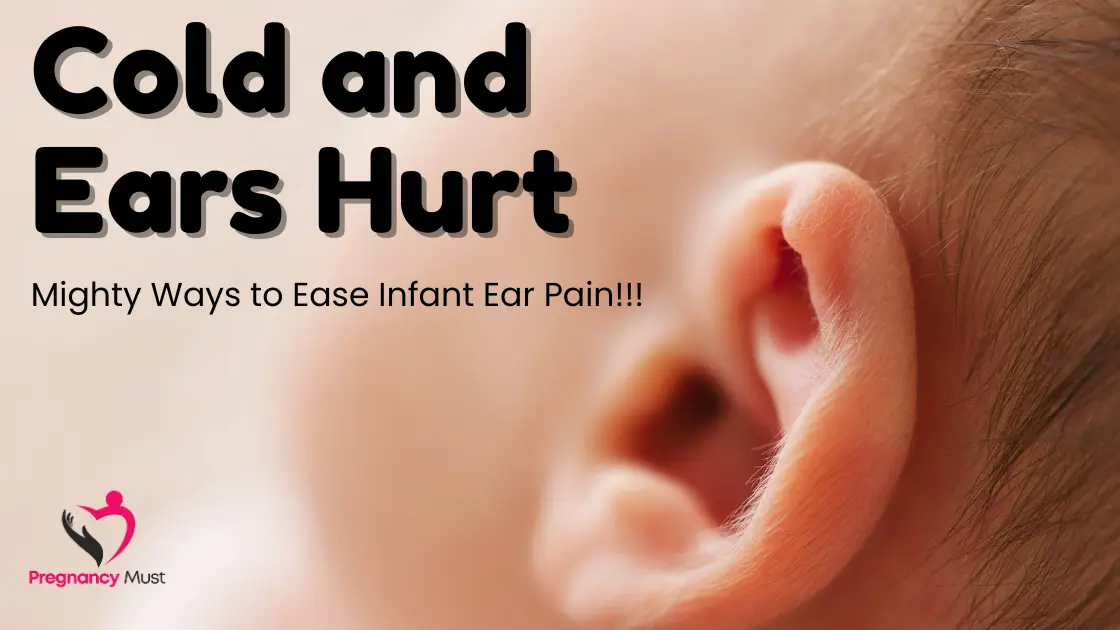Cold and ears hurt is a common concern for parents of infants, but what they have to realize is that this may be the symptom of another kind of disorder such as an ear infection caused by a viral infection. Understanding that these are some signs the baby is experiencing, you as the person taking care of them will be able to provide the most relief at the right time.
Table of Contents
- Understanding the Basics of Cold-Related Ear Pain in Infants
- Causes Behind Why Babies Experience Cold and Ears Hurt
- Recognizing Symptoms of Cold and Ears Hurt in Your Baby
- Distinguishing Ear Pain from Other Discomforts
- When Does Cold and Ears Hurt Require Medical Attention?
- Diagnosis Methods for Cold and Ears Hurt in Babies
- Effective Treatments for Relieving Cold and Ears Hurt
- Home Remedies to Soothe Cold and Ears Hurt in Infants
- Preventing Cold and Ears Hurt in Your Baby
- Related Conditions: When Cold and Ears Hurt Links to Other Issues
- Nutrition and Immunity: Supporting Babies Against Cold and Ears Hurt
- Vitamins for Ear Health
- Holiday Travel Tips
- Myths and Facts About Baby Cold and Ears Hurt
- Follow-Up Care Essentials
- FAQ: Common Questions About Cold and Ears Hurt in Babies
Understanding the Basics of Cold-Related Ear Pain in Infants
When babies catch a common cold, their immature immune systems make them vulnerable to complications. A cold virus can lead to fluid buildup in the middle ear, causing inflammation and pain. It is also very common in children below 12 months of age because their Eustachian tubes are shorter and horizontal and are able to easily carry bacteria or viruses present in the nose and the throat into the ears. Symptoms might start with nasal congestion, followed by fussiness and tugging at the ears.
Parents often notice that their baby’s cold and ears hurt worsen at night or during feeding, when pressure changes exacerbate the discomfort. It’s essential to differentiate this from other issues, but in many cases, it’s linked to acute otitis media, a middle ear infection that follows upper respiratory infections. Monitoring the symptoms assists in determining the timing of intervention by a professional.
Causes Behind Why Babies Experience Cold and Ears Hurt
The primary culprit for cold and ears hurt in babies is viral infections like rhinovirus, which cause the common cold. When congestion blocks the Eustachian tubes, fluid accumulates, creating a breeding ground for bacteria. This leads to infection and pain. Other factors include allergies, exposure to secondhand smoke, or even seasonal changes that increase cold prevalence.
In some instances, ears and jaw hurt when cold because the pain radiates from the ear to nearby areas like the jaw due to shared nerve pathways. This can mimic other conditions, but in babies, it’s often tied to the cold’s progression. Bottle-feeding in a supine position can also contribute by allowing milk to enter the Eustachian tubes, worsening the issue.
Environmental elements play a role too. Daycare attendance heightens exposure to germs, making colds—and subsequent ear pain—more frequent. Breastfeeding, however, offers protective antibodies that may reduce risks. Knowing these causes enables the parents to deal with them early.
Recognizing Symptoms of Cold and Ears Hurt in Your Baby
Spotting a cold and ears hurt starts with observing behavioral changes. Babies may cry more, especially when lying down, as fluid shifts increase pressure. They might pull or rub their ears, refuse feeds, or have trouble sleeping. A low-grade fever, runny nose, and cough often accompany this.
If your infant seems to have a cold and ear hurts, look for drainage from the ear, which could indicate a ruptured eardrum from infection buildup. Irritability peaks during these episodes, and in severe cases, balance issues emerge as the inner ear is affected. Differentiating from teething is key—teething might cause similar fussiness but usually involves drooling and gum swelling without cold symptoms.
Additional signs include reduced appetite and unusual crankiness. Monitoring temperature is vital; a fever over 100.4°F in newborns warrants immediate attention. Early recognition prevents escalation.
Distinguishing Ear Pain from Other Discomforts
Sometimes, ears and teeth hurt with cold because teething coincides with cold season, amplifying pain. Teething causes gum inflammation that can refer pain to ears, but colds add congestion. Check for white buds on gums to identify teething.
Jaw involvement, like when ears and jaw hurt when cold, might stem from sinus pressure or TMJ strain in older infants, but in babies, it’s typically ear-related radiation. Consulting a pediatrician helps clarify.
When Does Cold and Ears Hurt Require Medical Attention?

Not every instance of cold and ears hurt needs a doctor, but certain red flags do. For babies under 3 months, any sign of illness like ear pain demands prompt evaluation to rule out serious conditions. Persistent fever above 102°F, severe crying, or swelling around the ear are urgent.
If symptoms last beyond 48-72 hours without improvement, or if there’s pus-like discharge, seek care. Difficulty breathing or feeding also signals complications. Babies with recurrent issues might need specialist referral.
Signs of Complications in Infants
Watch for hearing changes or balance problems, indicating middle ear involvement. If your baby seems to have a cold and ear hurts with vomiting or diarrhea, dehydration risks rises. Chronic cases could affect speech development.
Diagnosis Methods for Cold and Ears Hurt in Babies
- Physical Examination: Pediatricians start with a thorough physical exam to diagnose cold and ears hurt in babies, focusing on the ears, nose, and throat to identify signs of infection or inflammation linked to a cold.
- Otoscope Usage: They use an otoscope, a handheld device with a light and magnifying lens, to inspect the eardrum (tympanic membrane) for abnormalities like redness, bulging, or fluid buildup behind it, which often indicates an ear infection secondary to a viral cold.
- Medical History Review: Gathering details about recent colds or upper respiratory infections helps confirm if the ear pain stems from viral origins, as most cases of cold and ears hurt follow such illnesses in infants.
- Tympanometry Test: This non-invasive procedure involves placing a small probe in the ear canal to measure how the eardrum moves in response to air pressure changes, detecting fluid or pressure issues in the middle ear that could be causing discomfort.
- Ear Fluid Cultures (Rare Cases): If an infection is suspected to be bacterial or persistent, doctors may rarely collect a sample of ear fluid through a minor procedure called myringotomy for lab analysis to identify specific pathogens.
- Guiding Treatment with Tests: These mostly non-invasive methods provide accurate insights without causing much distress to the baby, helping pediatricians decide on appropriate treatments like pain relief, watchful waiting, or antibiotics if needed..
Effective Treatments for Relieving Cold and Ears Hurt
Treatment for cold and ears hurt often begins conservatively. Pain relievers like acetaminophen or ibuprofen (age-appropriate doses) ease discomfort. Antibiotics are reserved for bacterial infections, not viral colds.
For babies over 6 months, watchful waiting is common if symptoms are mild. Hydration and rest support recovery.

Antibiotic Use in Infant Ear Infections
If bacteria are suspected, amoxicillin is typically prescribed. Complete the course to prevent resistance. Monitor for side effects like rash.
Home Remedies to Soothe Cold and Ears Hurt in Infants
Warm compresses applied to the ear for 10-15 minutes reduce pain from cold and ears hurt. Elevate the head during sleep to drain fluids.
Humidifiers add moisture to air, easing congestion. Saline drops and bulb suction clear noses. Avoid over-the-counter cold meds in babies under 2.
Natural Pain Relief Options
Breast milk drops in the nose may offer antibodies. Gentle massages around the ear and jaw help when ears and jaw hurt when cold. Ensure upright feeding positions.
For cases where ears and teeth hurt with cold, chilled teething rings provide dual relief if teething overlaps. Always supervise.
Preventing Cold and Ears Hurt in Your Baby
Prevention starts with hygiene. Frequent handwashing reduces germ spread. Vaccinations like flu and pneumococcal shots protect against viruses causing colds and infections.
Avoid smoke exposure and limit daycare if possible during peak seasons. Breastfeed exclusively for the first 6 months for immune boosts.
Lifestyle Tips for Ear Health
Keep babies away from sick individuals. Upright bottle-feeding prevents fluid reflux. Regular check-ups catch issues early.
Related Conditions: When Cold and Ears Hurt Links to Other Issues
Sometimes, cold and ears hurt overlaps with sinusitis, causing facial pain. In teething babies, it might compound discomfort. Allergies can mimic symptoms too.
If your child seems to have a cold and ear hurts with throat pain, it could be a sore throat referral. Professional differentiation is key.
Teething vs. Infection: Key Differences
Symptom | Teething | Ear Infection (Often with Cold) |
Fever | Low-grade (below 100.4°F or 38°C), if present at all | Higher fever (101°F or above), often persistent |
Drooling | Excessive, due to gum irritation | Minimal or none, unless accompanied by other cold symptoms |
Gum Appearance | Swollen, red gums; may see white tooth buds | No direct gum changes; focus is on ears |
Ear Tugging/Pain | Common due to referred pain from gums; mild and intermittent | Frequent tugging; intense pain, worsens when lying down |
Discharge | None from ears; possible clear drool | Fluid or pus draining from ear, indicating infection |
Biting/Chewing | Frequent on toys or fingers for relief | Not typical; baby may refuse food due to pain |
Fussiness/Sleep | Mild irritability, especially during day; improves with comfort measures | Severe crying, trouble sleeping; unrelenting even with soothing |
Other Signs | No hearing issues; may coincide with ears and teeth hurt with cold but without infection markers | Possible hearing trouble, balance issues; often follows nasal congestion from cold |
Duration | Comes and goes with tooth eruption (days to weeks) | Acute, lasts 48-72 hours without treatment; may need medical intervention |
Long-Term Effects of Recurrent Cold and Ears Hurt
Repeated episodes of cold and ears hurt might lead to fluid persistence, affecting hearing and speech. In chronic cases, tubes can be passed. Tracking of the development is a guarantee of intervention. Tubes mature by age 3 thus most babies outgrow this.
Nutrition and Immunity: Supporting Babies Against Cold and Ears Hurt

A balanced diet strengthens immunity against cold and ears hurt. Breast milk provides essential antibodies. Introduce vitamin-rich solids at 6 months.
Hydration is crucial during illness. Avoid sugary drinks that weaken defenses.
Vitamins for Ear Health
Vitamin D and zinc support ear infection prevention. Consult pediatricians for supplements.
Emotional Support for Parents Dealing with Cold and Ears Hurt
Caring for a baby with cold and ears hurt can be stressful. Seek support from family or online communities. Self-care maintains your well-being.
Recognize when ears and jaw hurt when cold affects sleep, adjusting routines accordingly.
Seasonal Considerations for Cold and Ears Hurt Risks
Winter increases cold and ears hurt incidence due to indoor crowding. Humidify homes to combat dry air.
Summer allergies might trigger similar issues. Year-round vigilance helps.
Holiday Travel Tips
During travel, pressure changes can worsen cold and ears hurt. Nurse during takeoff for relief.
Myths and Facts About Baby Cold and Ears Hurt
Myth: All ear pain needs antibiotics. Fact: Many resolve naturally. Myth: Teething causes infections—it’s coincidental.
When babies have a cold and ear hurts, facts guide better care.
Integrating Professional Advice for Cold and Ears Hurt
Always follow pediatrician recommendations for cold and ears hurt. They tailor plans to your baby’s needs.
Track symptoms in a journal for appointments.
Follow-Up Care Essentials
Follow up after treatment so that you can guard against relapse. Wash the toys to avoid re-infection.
FAQ: Common Questions About Cold and Ears Hurt in Babies
What causes cold and ears hurt in infants?
Viral colds lead to fluid buildup and infections in the middle ear.
How can I relieve my baby’s cold and ears hurt at home?
Use warm compresses, pain relievers, and humidifiers for comfort.
When should I see a doctor if my baby seems to have a cold and ear hurts?
If symptoms persist beyond 48 hours or fever is high, seek help immediately.
Can teething cause ears and teeth hurt with cold?
Teething pain can overlap with cold symptoms, but they’re separate; check for gums swelling.
Why do ears and jaw hurt when a cold happens in babies?
Pain radiates from ear inflammation to the jaw via nerves.
How to prevent cold and ears hurt in my baby?
Vaccinate, wash hands, avoid smoke, and breastfeed for immunity.
Explore more on Pregnancy Must –
- Heavy Metal Detox for Kids—Naturally Easy and Effective
- Chipped Tooth Crown: Save for Your Toddler’s Smile
